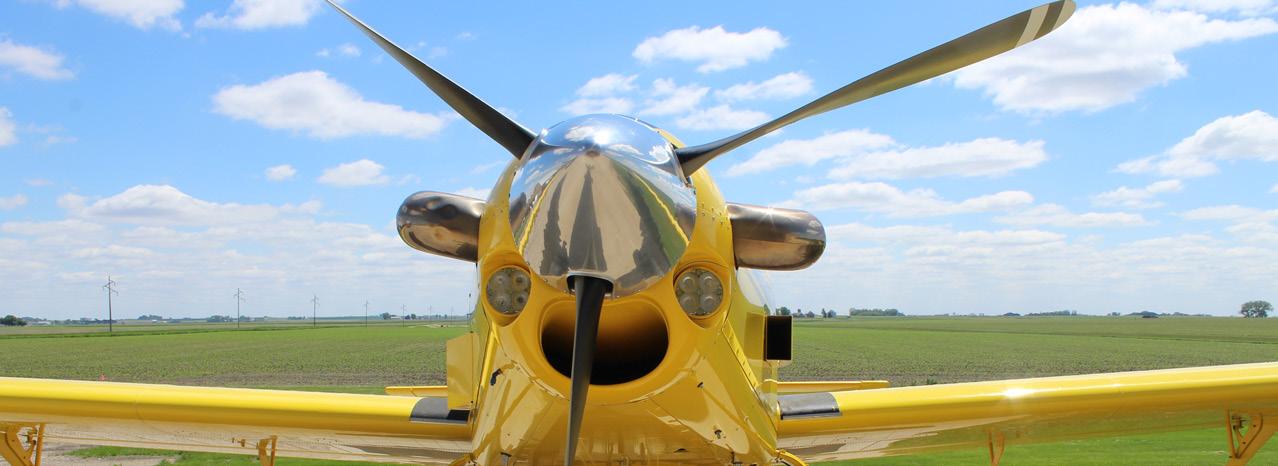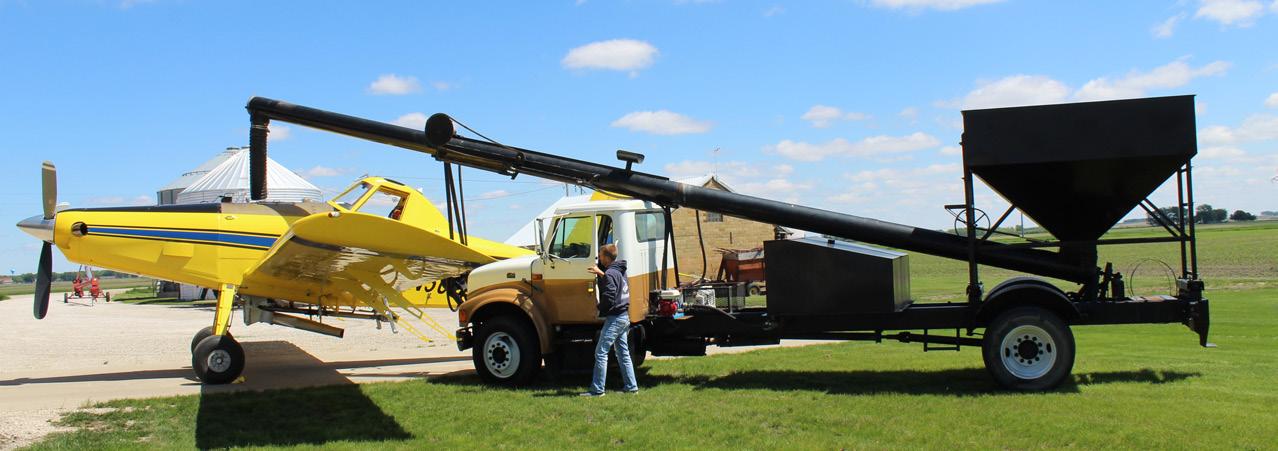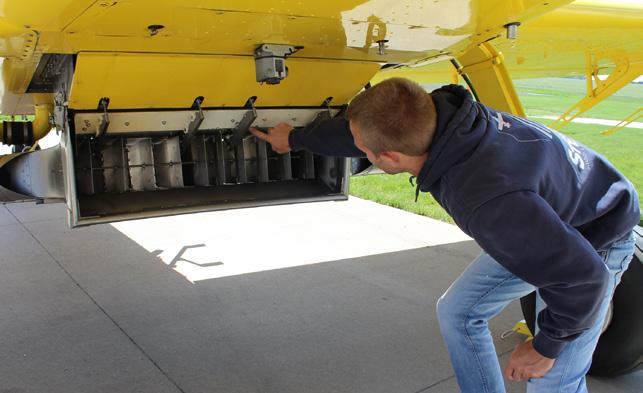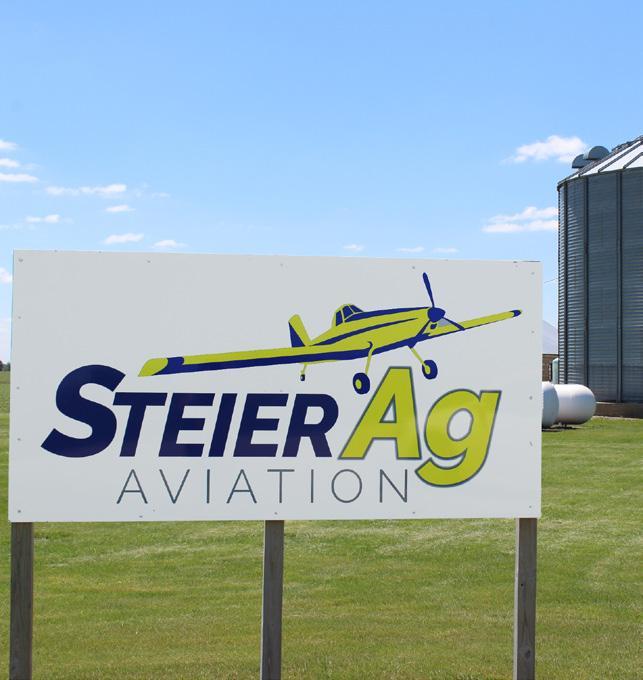
2 minute read
Flying On Cover Crop Seed Steier Ag Aviation • Algona, Iowa
by Chaunce Stanton Marketing Manager

Advertisement
Like Albert Lea Seed, Steier Ag Aviation of Algona, Iowa, is a third-generation, family-owned business. A lot has changed since 1954, when Tony and Chad Meyer’s grandfather started with 20-gallon capacity in airplanes. (Chad is pictured above in the cockpit.) “Now we’re up to 500-gallon and even 800-gallon capacity in the planes,” Chad Meyer said. “My grandfather used to do 20-acre loads, and now we’re doing 250-acre loads. If a farmer’s field is close to the airfield, we can do a seed load about every 15 minutes.” Steier Ag has expanded its business from just aerial liquid application to becoming a full agricultural retailer of seed and chemical supplies – and aerial cover crop seed application, of course. Their typical range is about a 60-mile radius from Algona, but they often fly further, depending on the volume of seed required. Chad said they’ve seen a spike in cover crop seed application over the past five years. “About 95 percent of the cover crops we fly on are oats and rye around here. We do some turnips and radishes. We’ve even applied some hairy vetch in mixes.” After removing the liquid system from the plane, they attach a 13-foot-wide stainless-steel spreader, which disperses the seed in about an 80-foot wide spread pattern. The hopper is pressurized and pushes air down on the seed.
Timing Aerial Seed Application “Our liquid season goes through August, so we like to wait until late August to start cover crop seeding. We have gone as late as October, but we recommend September for aerial seed application.”
The Big Advantage of Flying On Seed “The big advantage is that we’re not going to run over the corn crop just to get the cover crop in on time.”
Cost of Aerial Application Steier charges by the pound—about $12.50 to $15 per pound, depending on the seeding rate and the distance from the airport.
Challenges in Flying On Cover Crops Chad said that calibrating for seed size can be challenging for certain mixes or for unique seed. “We do cover crop mixes, and for those we calibrate for the largest seed in the mix. Calibrating for radishes, which is a tiny seed, in a mix can be tricky.” Chad added that their goal is to apply the cover crop seed at an accurate rate, based on the farmer’s specifications. “Small orders, like 12 acres of a unique seed or at a unique rate, can be a challenge. We want to get that seeding rate right. We can adjust the flow rate on the fly, but we can’t see the seeds in the hopper from the cockpit, so we can’t always tell how fast they’re flowing. And tiny seeds, like radish, we can’t see coming out in the air, unlike larger seeds like rye and oats. It takes a little learning to get the calibration right so we can be accurate.” Loading the hopper with cover crop seed.


Chad Meyer points out where the seed is released during aerial application of cover crop seed.





